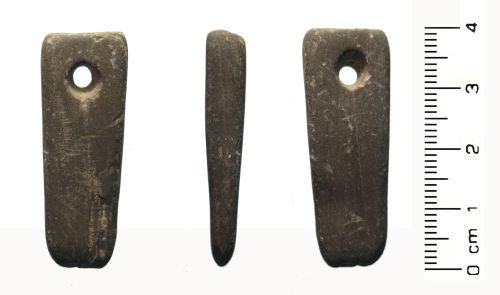
Rights Holder: Birmingham Museums Trust
CC License: ![]()
Image use policy
Our images can be used under a CC BY attribution licence (unless stated otherwise).
WHETSTONE
Unique ID: HESH-A4D218
Object type certainty: Certain
Workflow
status: Awaiting validation ![]()
Chronology
Broad period: IRON AGE
Period from: IRON AGE
Period to: MODERN
Date from: 200 BC
Date to: AD 1800
Dimensions and weight
Quantity: 1
Length: 38.1 mm
Width: 14.1 mm
Thickness: 6.7 mm
Weight: 6.2 g
Personal details
This information is restricted for your access level.
Materials and construction
Spatial metadata
Region: West Midlands (European Region)County or Unitary authority: County of Herefordshire (Unitary Authority)
District: County of Herefordshire (Unitary Authority)
To be known as: Weobley
Spatial coordinates
Unmasked grid reference accurate to a 10 metre square.
References cited
| Author | Publication Year | Title | Publication Place | Publisher | Pages | Reference | |
|---|---|---|---|---|---|---|---|
| Saunders, P. | 1991 | Salisbury and South Wiltshire Museum Medieval Catalogue: Part 1 | Salisbury | Salisbury and South Wiltshire Museum |
Similar objects
Find number: HESH-F4BF9B
Object type: WHETSTONE
Broadperiod: MEDIEVAL
An incomplete whetstone of probable Early Medieval or Medieval date (c.800 - 1400). The whetstone is formed from a very fine sedimentary mica…
Workflow: Awaiting validation![]()

Find number: DOR-E194B6
Object type: WHETSTONE
Broadperiod: MEDIEVAL
Incomplete whetstone of probable Early Medieval or Medieval date (c.800 – 1400). The whetstone is formed from a very fine sedimentary mi…
Workflow: Awaiting validation![]()

Find number: HESH-6D5CE2
Object type: WHETSTONE
Broadperiod: MEDIEVAL
Incomplete whetstone of possible Early Medieval or Medieval date (c.800 - 1400 AD). The whetstone is made from a very fine sedimentary mica r…
Workflow: Awaiting validation![]()







